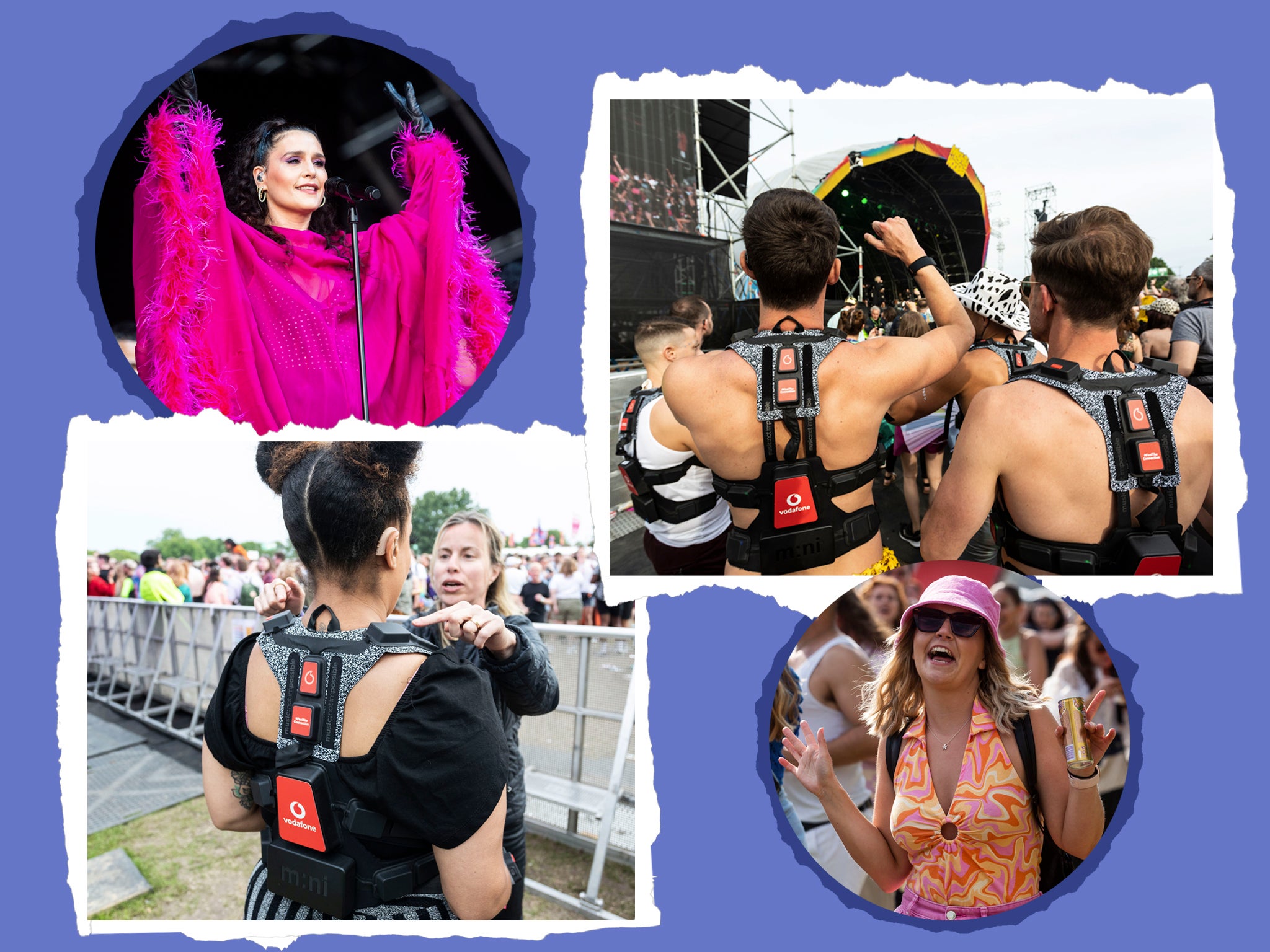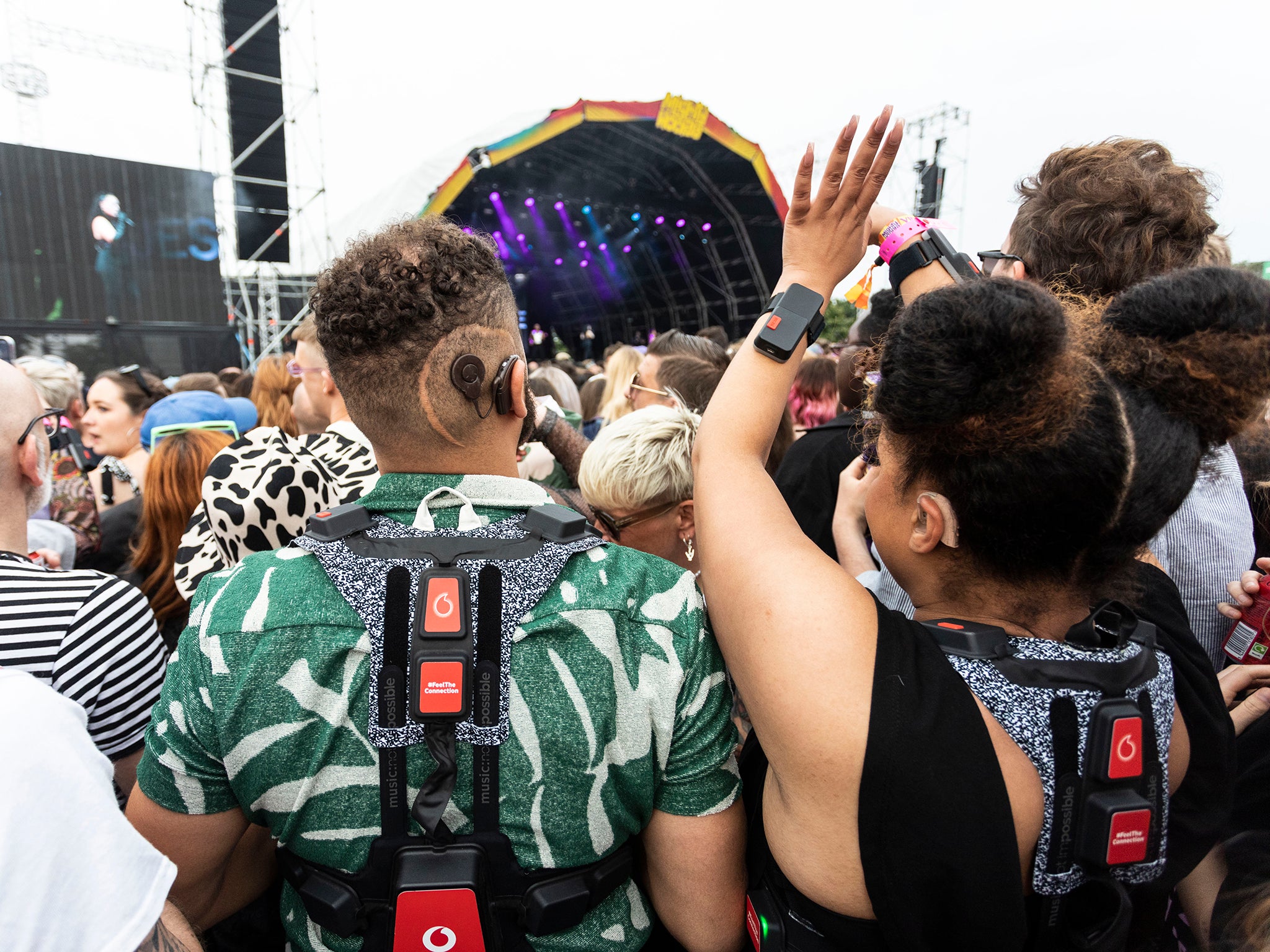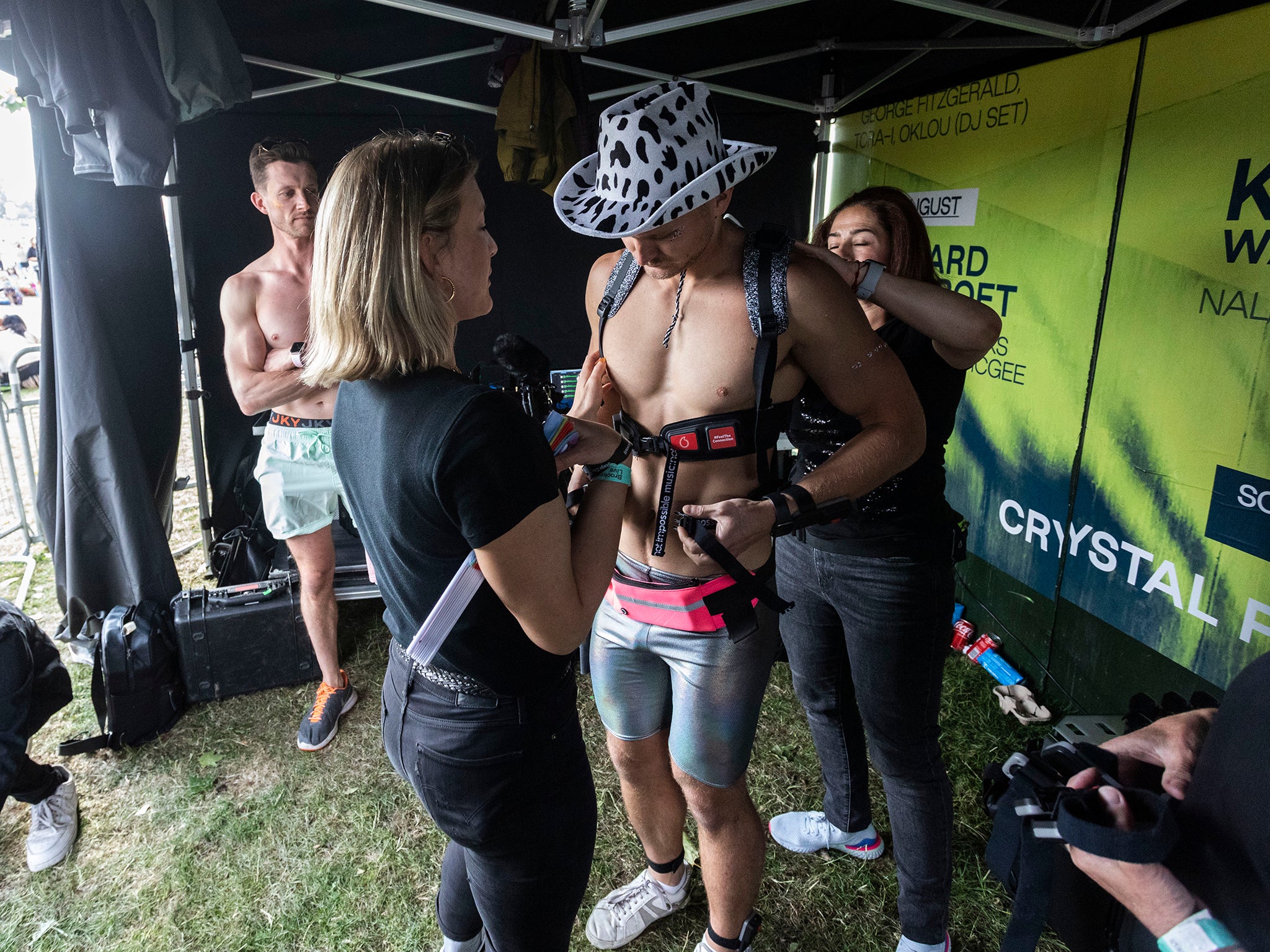Good vibrations: The radical tech helping deaf concertgoers ‘feel’ live music
For years, deaf and hard-of-hearing people have had to rely on mere speaker vibrations to enjoy live music. A new ‘haptic’ suit backed by Vodafone, however, claims to have made that a thing of the past. Liam O'Dell tried one on and spoke to concertgoers about what the new tech could mean for them


Watching from a distance, not everyone can feel the buzzing bass or thumping drums of a punchy festival performance. Vibrations from the speakers can only travel so far, and if the concertgoer is deaf or hard of hearing, the experience can be far removed from that of the hearing majority. “You go into a venue and the speakers are always away from you at a club, or in a nightclub or at a festival,” DJ John McDevitt, who is deaf, tells me at the Mighty Hoopla festival in Brixton. “For a deaf person, you rely on a speaker to get the vibration.”
One piece of tech backed by Vodafone could soon offer up a different experience. A haptic suit, packed with 24 vibration points situated around the body – including some strapped to the wrists and ankles – looks to have deaf and hard-of-hearing fans feel the music as it rings out on stage. While audio experiences based around vibrations are far from a new phenomenon for deaf people, this suit claims to provide a unique experience by combining two pieces of technology.
“The first part is it takes music straight from the performer in real time, and converts that into vibrations all over your body to create a surround-sound vibrational experience,” explains Dani Valkova, of the production company UNIT9. “The next portion of that is [a] world-first. Using Vodafone’s 5G high-speed network, we’re taking recordings from the crowd, converting [those] into data, and using the latest machine learning to transform what the crowd noise picks up into vibrations and sensations on the body.”
Of the way the suit translates crowd noise into vibrations, Valkova uses an analogy that only adds to the technology’s futuristic feel. “We took all of the ways that the crowd could interact and we grouped them into different states,” she explains. “In [these] states, we wanted to translate every possible crowd reaction into something like a matrix. One side of it was the energy, the other side was the intensity.”
Seasoned concertgoers will know the feeling of low-frequency sound hitting the chest during a performance, but only so much of the music is concentrated there with these haptic vests, which boast around 10 hours of battery life. Where deaf and hard-of-hearing audiences will feel the music is very much an artistic decision.
As I suit up alongside other deaf fans ahead of Jessie Ware’s Saturday set at Mighty Hoopla, “vibro composer” Si Tew details the thinking behind the engineers on stage, who will match musical sounds to vibrations on the equipment. In the case of Ware’s performance, I learn that sensors on the wearer’s wrists and shoulders will replicate the sound of the crowd clapping, while vocals and drums are felt around the ribs and on the ankles, respectively. It works well for hard-hitting tracks like “Wildest Moments”, but Ware’s slower songs make you wonder if the suit is actually working at all.
Wearing a colourful snapback on this sunny Saturday afternoon, Tew speaks with considerable excitement about the device, telling me he is willing to geek out further about the technology after the experience – if and when required. It’s an enthusiasm matched by the artists themselves. Ware, with bright purple eyeshadow, beams as she expresses her support for the tech being made available to fans.

“Music is for everybody, and it should be for everybody,” she tells me during a conversation in her dressing room. “The reaction and the togetherness is so important, particularly at festivals, as somebody who loves to go to them. For [deaf people] to be able to feel included and relevant and important as an audience, it’s so amazing. When you’re at a festival or a gig or anything, you feed off the energy around [you], and so for deaf people to finally be allowed to enjoy that space and for it to be something that brings music to life for them, it’s game-changing.”
McDevitt uses the same word to describe his experience with the technology. “At first, I didn’t know what to expect, because I just thought the vest was going to be vibrating,” he admits, “but different parts of it [mirrored] different instruments. For example, the guitar was vibrating away, the drums came in – it was all different parts of the vest. Then there were [sensors] on the wrist which were then connected to the audience.” Every time the audience responded to something, so did the vibrations. “It blended so well and I was really impressed with it.”
Jessie Ware fan Gemma Jeffrey, who is completely deaf in her right ear, shared a similar view. “It was great,” she says after Ware’s set. “Deaf people going to music concerts, it is often always about the atmosphere, and I found that having the technology on, it helped. Something like [Ware’s track] ‘Running’ was just awesome, because you could really feel all the crescendos and it just made you want to dance more. It’s really progressive technology for people.”
In among the supportive comments, questions soon emerge around future use of the tech. “When you’re dressing up, going to the festival, then putting on the suit, it depends on all your outfit,” says Cory Labrosse, a cochlear implant user, when I ask about whether he’d wear the tech. “It depends on how comfortable you are when you’re mixing and walking around. It’s a big question mark. I mean, I know it’s a new thing, but gradually, in the future, [do] we just get used to it? I’m not sure. But I think we’re all for it.”

Other acts on Mighty Hoopla’s line-up were keen to be part of something new, too. “It’s so exciting that thanks to technology even more of our fans can enjoy the full experience,” said the legendary pop group Steps ahead of their Friday set. Saturday headliners Sugababes added: “Everyone should be welcome at live shows, and this is a brilliant way to be as inclusive as possible.”
Disability charities are also excited by the technology’s potential. “Haptic devices such as this open up new possibilities in augmenting the experience for Deaf and hard-of-hearing people,” writes Jacob Adams of live music organisation Attitude is Everything in an email. “We often hear from people who feel that access doesn’t always come with feeling part of the crowd, so a device that includes crowd reactions is one we will be watching closely.”
Mighty Hoopla marked the technology’s debut, but the team behind the suit are hopeful it can be scaled up in due course. With artists and charitable organisations all on board as well, deaf music fans have a good feeling about the future of inclusive concerts and festivals – in more ways than one.
Join our commenting forum
Join thought-provoking conversations, follow other Independent readers and see their replies
Comments


Bookmark popover
Removed from bookmarks